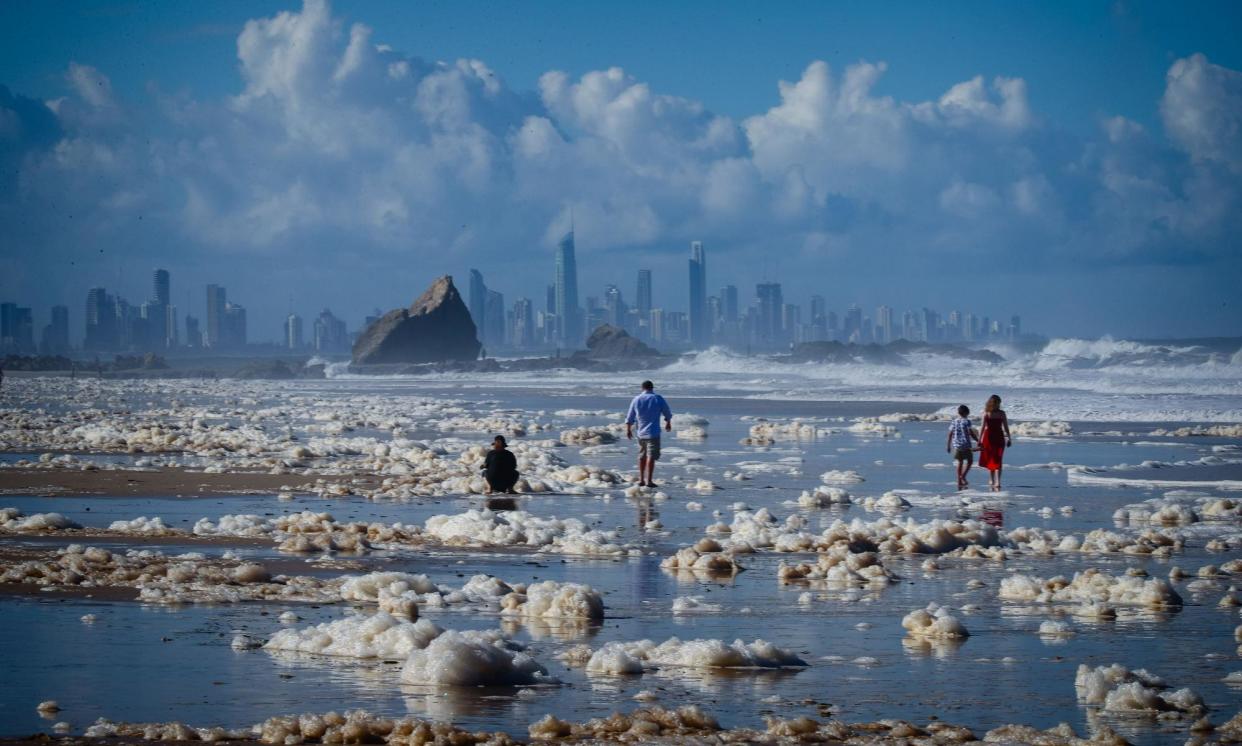Almost 68% of Australia’s tourism sites at major risk if climate crisis continues, report says

South Australia’s wine regions shrouded in bushfire smoke, the Daintree rainforest cut off by flooding and tourists marooned at major airports because of violent storms. This snapshot is the potential chaotic future for Australia’s tourism industry, a new report has warned.
At least half of 178 tourism assets around the country – from national parks to city attractions and airports – are already facing major climate risks, the analysis showed. And as the heat rises, so do the disruptions. Many of the country’s 620,000 tourism jobs will be under threat, according to the report from insurance group Zurich and economic analysts Mandala.
“What struck us was just the sheer size of the problem,” said Adam Triggs, an economics expert and partner at Mandala. “As we looked at the different sites around the country, it became clear how systemic this risk is.”
The report, published on Monday, used data from Zurich that looked at how vulnerable areas are to nine “climate perils”, defined as wind, flood, heat, cold, storm, drought, bushfire, hail and rain.
Using climate models, the analysis accounted for changes in those areas using a “middle-of-the-road” scenario for greenhouse gas emissions where the globe warms by 2C by mid-century. This level of warming puts up to 68% of tourism assets in the major risk category by 2050.
Queensland has 52% of sites in the highest of five risk categories, more than any other state, where “multiple very high risks with a very high level of impact” were considered to exist at each location.
Notable areas considered at high risk included Sydney’s royal botanic gardens and Bondi beach, the Great Ocean Road and the Grampians in Victoria, Cable Beach and Kalbarri national park in WA and the national arboretum in Canberra.
In South Australia, the Barossa and Adelaide Hills were especially at risk, as were the Daintree and K’Gari island in Queensland, Cataract gorge in Tasmania and Kakadu and Uluru in the Northern Territory.
All 31 of Australia’s busiest airports fell into the two highest climate risk categories because of their location and exposure to storms and wind.
Wine-growing regions, botanic gardens, scenic roads and rail lines, rainforest and national parks were found to be in the highest climate risk categories. Museums, galleries and stadiums had relatively low risk.
Triggs said Australia needed to work much harder to help sites become more resilient and adapt to climate change impacts already here.
The black summer bushfires of 2019 and 2020 cut tourism revenues by 35%. The report said if a similar revenue loss happened today it would risk up to 176,000 jobs, more than half outside capital cities.
A study published this year found black summer fires reduced the output of tourism and its supply chains by $2.8bn almost instantly.
Triggs said the policy discussion in Australia has largely been focused on reducing emissions, “but we don’t think as much on the climate change that is already happening and will get worse”.
Daniel Gschwind, a professor of practice at the Griffith institute for tourism, said the report’s findings should be “concerning for everyone.”
“This clearly shows that the tourism industry is bearing the burden of decades of global policy failure [to reduce emissions].
“The tourism industry has a responsibility to advocate strongly [for climate action] and must use its communication opportunities to raise more awareness.”
He said tourism assets, together with governments and community, needed to continue to build their resilience to climate impacts. “We have to respond on all fronts and double down our efforts,” he said.


